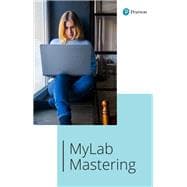For courses in Introductory Statistics.
This ISBN is for the 24-month MyLab access card. Pearson eText is included.
An approach that helps you put statistical concepts together—from the author's classroom
Mike Sullivan draws on his passion for both statistics and teaching to help students grasp that statistics is connected, not only in concepts, but to the world at large. Used first with Sullivan’s own students, Fundamentals of Statistics (the brief version of Sullivan’s Statistics: Informed Decisions Using Data) pulls ideas and strategies from his classroom into a wealth of new and updated exercises, examples, and MyLab® problems, new videos, and much more.
By using the latest statistical software, students can focus on building true understanding rather than memorizing formulas. All resources, including the Student Activity Workbook and Author in the Classroom videos, were created by Mike for his classroom and are available to help all students succeed and stay engaged.
Personalize learning with MyLab Statistics with Pearson eText
This flexible digital platform combines unrivaled content, online assessments, and customizable features to personalize learning and improve results.
Pearson eText is an easy-to-use digital textbook available within MyLab that lets you read, highlight, and take notes all in one place.
NOTE: Before purchasing, check with your instructor to confirm the correct ISBN. Several versions of the MyLab® and Mastering® platforms exist for each title, and registrations are not transferable. To register for and use MyLab or Mastering, you may also need a Course ID, which your instructor will provide.
Used books, rentals, and purchases made outside of Pearson
If purchasing or renting from companies other than Pearson, the access codes for the MyLab platform may not be included, may be incorrect, or may be previously redeemed. Check with the seller before completing your purchase.












